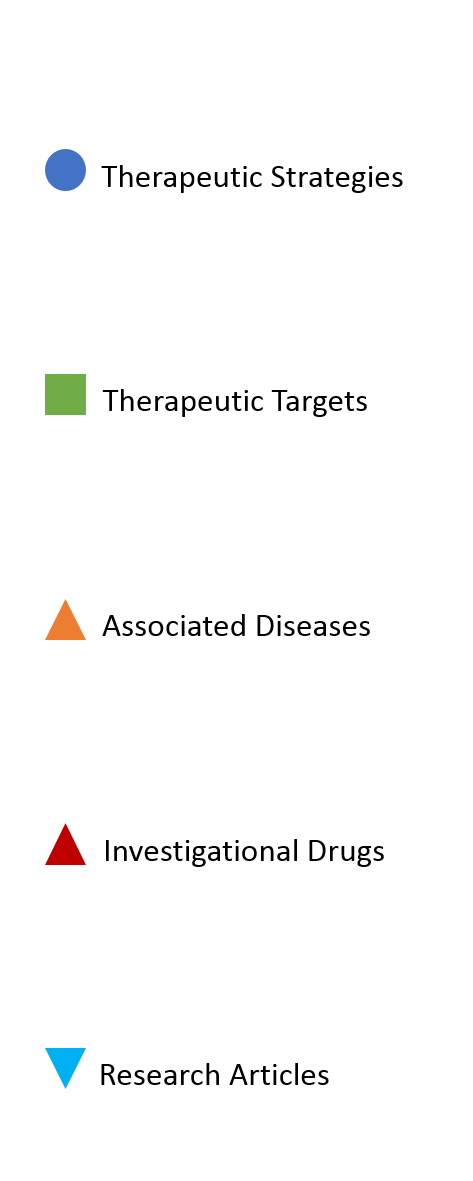Research Article Details
| Article ID: | A31262 |
| PMID: | 30949516 |
| Source: | J Diabetes Res |
| Title: | The APOE∗3-Leiden Heterozygous Glucokinase Knockout Mouse as Novel Translational Disease Model for Type 2 Diabetes, Dyslipidemia, and Diabetic Atherosclerosis. |
| Abstract: | Background: There is a lack of predictive preclinical animal models combining atherosclerosis and type 2 diabetes. APOE∗3-Leiden (E3L) mice are a well-established model for diet-induced hyperlipidemia and atherosclerosis, and glucokinase+/- (GK+/-) mice are a translatable disease model for glucose control in type 2 diabetes. The respective mice respond similarly to lipid-lowering and antidiabetic drugs as humans. The objective of this study was to evaluate/characterize the APOE∗3-Leiden.glucokinase+/- (E3L.GK+/-) mouse as a novel disease model to study the metabolic syndrome and diabetic complications. Methods: Female E3L.GK+/-, E3L, and GK+/- mice were fed fat- and cholesterol-containing diets for 37 weeks, and plasma parameters were measured throughout. Development of diabetic macro- and microvascular complications was evaluated. Results: Cholesterol and triglyceride levels were significantly elevated in E3L and E3L.GK+/- mice compared to GK+/- mice, whereas fasting glucose was significantly increased in E3L.GK+/- and GK+/- mice compared to E3L. Atherosclerotic lesion size was increased 2.2-fold in E3L.GK+/- mice as compared to E3L (p = 0.037), which was predicted by glucose exposure (R 2 = 0.636, p = 0.001). E3L and E3L.GK+/- mice developed NASH with severe inflammation and fibrosis which, however, was not altered by introduction of the defective GK phenotype, whereas mild kidney pathology with tubular vacuolization was present in all three phenotypes. Conclusions: We conclude that the E3L.GK+/- mouse is a promising novel diet-inducible disease model for investigation of the etiology and evaluation of drug treatment on diabetic atherosclerosis. |
| DOI: | 10.1155/2019/9727952 |

| Strategy ID | Therapy Strategy | Synonyms | Therapy Targets | Therapy Drugs | |
|---|---|---|---|---|---|
| S03 | Anti-fibrosis | fibrosis | Angiotensin Receptor Blocker (ARB); CCR2/CCR5 antagonist; Thyroid receptor β agonist; PEGylated human FGF21 analogue; Monoclonal antibody to lysyl oxidase-like 2 (LOXL2); Galectin-3 inhibitor; FGF19 variant | Losartan; Cenicriviroc; VK-2809; MGL-3196; Pegbelfermin; Simtuzumab; GR-MD-02; NGM282 | Details |
| Diseases ID | DO ID | Disease Name | Definition | Class | |
|---|---|---|---|---|---|
| I13 | 3146 | Lipid metabolism disorder | An inherited metabolic disorder that involves the creation and degradation of lipids. http://en.wikipedia.org/wiki/Lipid_metabolism | disease of metabolism/ inherited metabolic disorder | Details |
| I05 | 9352 | Type 2 diabetes mellitus | A diabetes that is characterized by chronic hyperglycaemia with disturbances of carbohydrate, fat and protein metabolism resulting from defects in insulin secretion, insulin action, or both. A diabetes mellitus that is characterized by high blood sugar, insulin resistance, and relative lack of insulin. http://en.wikipedia.org/wiki/Diabetes, http://en.wikipedia.org/wiki/Diabetes_mellitus_type_2 | disease of metabolism/inherited metabolic disorder/ carbohydrate metabolic disorder/glucose metabolism disease/diabetes/ diabetes mellitus | Details |
| I07 | 1936 | Arteriosclerosis | Build-up of fatty material and calcium deposition in the arterial wall resulting in partial or complete occlusion of the arterial lumen.https://ncit.nci.nih.gov/ncitbrowser/ConceptReport.jsp?dictionary=NCI_Thesaurus&ns=ncit&code=C35768 | disease of anatomical entity/cardiovascular system disease/ vascular disease/ artery disease | Details |
